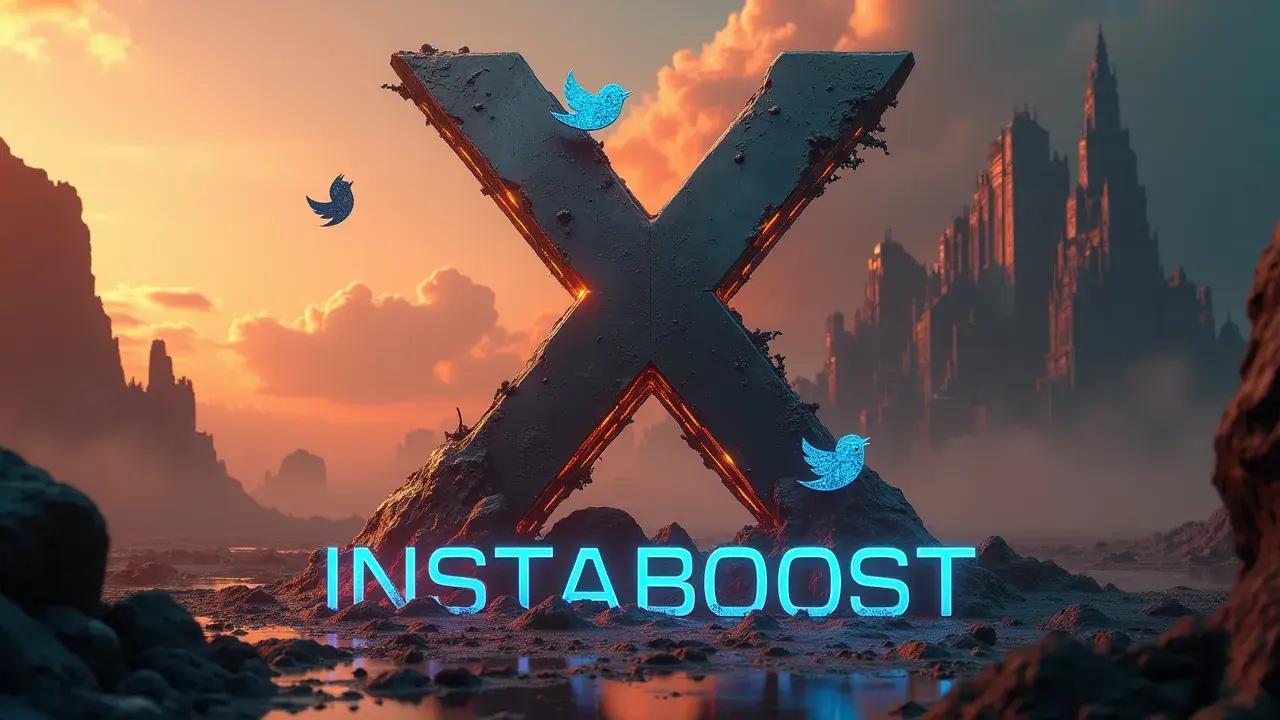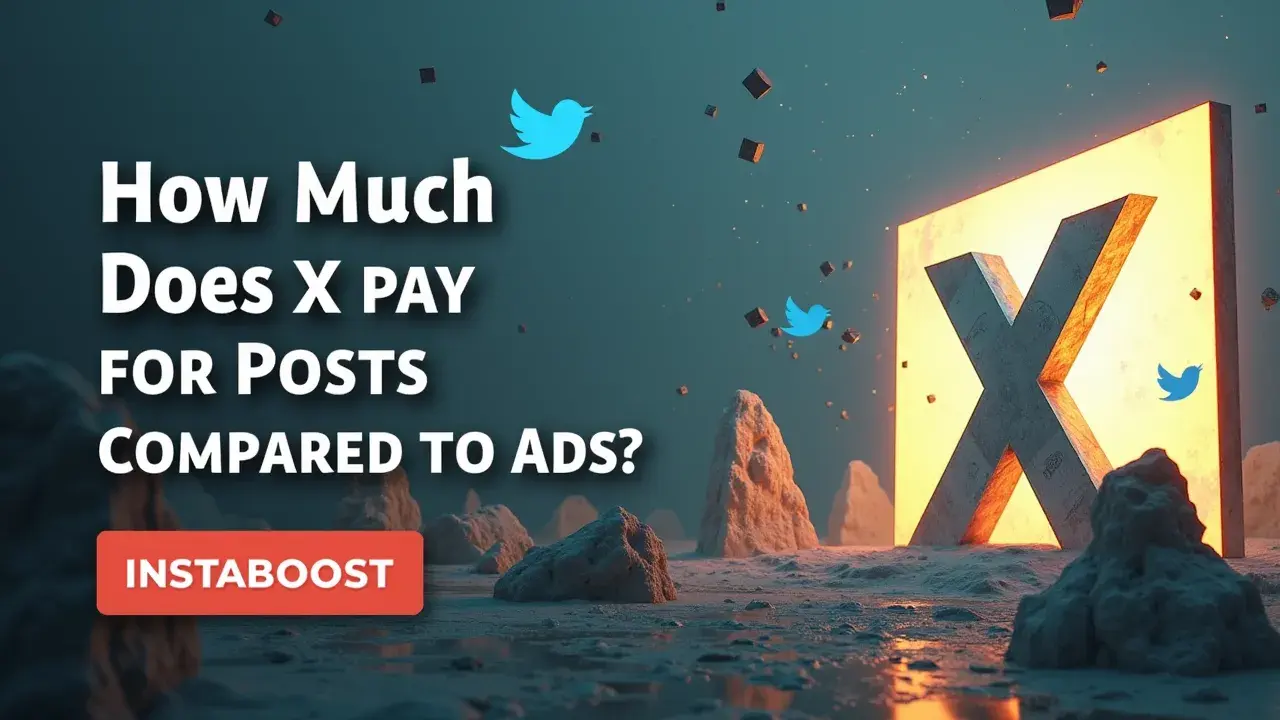How Much Does X (Twitter) Pay for Posts Compared to Ads?
Payouts differ because posts tend to reward consistent engagement and retention, while ads can deliver faster spikes early on. Track how earnings appear over time to see whether steady watch time holds or first-hour surges align with goals. Compare a full week of payouts side by side to assess cadence and sustainability. A smart path is prioritizing reliable retention and regular posting, then validating with weekly earnings patterns rather than chasing one-off peaks.
Why This Question Matters More Than a Rate Card
Most creators and marketers asking how much X pays for posts versus ads are really looking for predictability, not just bigger payouts. Posts earn through revenue shares that hinge on retention, real comments, and qualified impressions. Ads buy reach on a clock, with costs tied to targeting and competition. Neither is inherently better – the edge comes from matching the lever to intent. If you need rapid distribution to validate a message or spark early momentum, targeted promotion from a reputable account or partner can compress the learning curve.
If you’re building compounding income, a steady cadence of post formats that hold watch time and invite conversation tends to stabilize RPM. The smart move is to stack both with clean analytics. Ship a post, give it an organic runway, then add measured spend when you see retention signals and saves. Treat creator collabs and whitelisting as accelerants when the creative already proves it can hold attention. Put safeguards in place: frequency caps, comment quality thresholds, and a testing loop that compares week-over-week earnings per thousand impressions across organic and paid. A common mistake is pricing ads against the gross payout from a single viral post.
Price against average projected earnings from your last five pieces and the incremental lift you can attribute to promotion. When you do that, you’ll see posts and ads as two gears in the same machine. Posts compound when your audience is matched to the topic and timing. Ads pay when they amplify what’s already working. Search intent tip: if you’re researching “X revenue share,” map what you find to your own retention curves – your numbers, not platform averages, should guide which lever you pull first, and consider tools for a fast X profile boost only after your creative holds attention.

Define What “Paid” Means Before You Compare
Let’s pin down what “paid” means before we stack posts against ads. If you’re comparing how much X pays for posts versus ads, start by defining payout. Is it only cash, or also the compounding value of owned attention? Posts earn through revenue shares that grow with retention signals, real comments, and qualified impressions. That’s money plus momentum you can retarget. Ads, bought on a clock, convert budget into controlled reach with measurable CPM and CPC.
That’s cash out and fast feedback. A credible comparison uses the same clock speed, source attribution, and intent buckets. Think organic watch time and comment depth versus paid click quality and post-click behavior. The practical move is pairing creator collabs and native posts to build watch-time holds, then using targeted promotion to turn early momentum into statistically useful sample sizes. Reputable analytics are non-negotiable. Use clean UTM structures, server-side tracking where applicable, and comment quality scoring to prevent false positives.
If you run paid, run it like a testing loop with small, time-boxed spends to validate hooks and thumbnails that your posts can then scale for “free.” If you rely on posts, protect predictability with a steady publishing cadence and safeguards against vanity spikes by optimizing for session starts and meaningful replies, not just impressions. The non-obvious insight is that the highest ROI often comes from measuring time to learning, not just cost per thousand. Ads buy faster learning, and posts bank compounding trust. When both are matched to intent and measured symmetrically, you can assign a blended earnings-per-minute that turns “How much does X pay?” into a clear, decision-ready metric for creators and marketers alike, while ignoring artificial inflation tactics like buy followers for X that distort signal without improving outcomes.
Build a Hybrid Engine: Posts Earn Yield, Ads Set the Pace
The riskiest move is pretending there’s no risk. Treat posts as yield and ads as throttle so you can see what X pays for posts versus ads on the same terms. Posts compound when you feed retention signals – steady watch time, real comments, repeat viewers – so the payout curve behaves like a growing dividend. Ads deliver a predictable burst on a clock, useful for testing hooks, targeting, and timing, but the payoff depends on clean analytics and whether impressions are qualified.
The practical path is a hybrid. Publish creator-led posts tied to a specific problem and CTA, then use targeted promotion to speed up early momentum only on winners. Set a testing loop with 3 to 5 post variants, a 24-hour organic read, then modest, reputable ad spend to validate the strongest mix of watch time and comment rate. If retention drops by second 5, rerun the creative. If comments skew generic, set up a collab to seed credible discussion. Keep safeguards in place – frequency caps, audience exclusions, and server-side tracking – so you measure cost per qualified impression, not just CPM.
Over a week, ladder the budget. Day 1 to find fit, days 2 to 3 to scale what holds attention, days 4 to 7 to harvest owned attention through follows, email, or community joins, so the next post earns more without paying more. That turns paid media into a ramp, not a rent bill. When you ask what X pays, include the compounding value of owned attention and the carryover from retention-rich posts, along with X visibility likes as a benchmark input for calibrating early momentum. Ads are the accelerant that puts that compounding on schedule when your fit, timing, and measurement are tight.
Beware the Mirage of “Average CPMs”
Let’s talk about the thing no one puts in the brief. You can’t decide what X should pay for posts versus ads if you treat “average CPM” like a law of nature. It shifts with intent, placement, and audience quality. Organic posts create blended value: reach you didn’t buy, creator collabs that transfer trust, and retention signals that lift distribution across the system.
Ads price attention at the edge of demand, so your cost reflects how tight your targeting is and how strong your creative is. The smarter move isn’t to chase a single CPM. It’s to compute effective payout per desired action on the same lens – cost or yield per incremental subscriber, click, watch-hour, or lead. When you normalize to the conversion you actually bank, the comparison stops being theoretical. That’s where a testing loop pays off. Use targeted promotion to give posts early momentum, watch real comments and repeat viewers as leading indicators, and let clean analytics show you when the dividend is compounding versus stalling.
If you need speed, a reputable, qualified media buy gets you data in hours. If you’re buying reach, buy matched-to-intent impressions, not cheap traffic that won’t retain. For posts, upgrade inputs – creator collabs with overlapping audiences, retention edits, and steady cadence. For ads, rotate creative aligned to your best organic hooks. One non-obvious insight: track yield half-life – how long a post keeps generating qualified actions without spend. Posts with a long half-life change the math on what paid really pays, because they subsidize future ads by warming the audience before you ever open the wallet.
Close the Loop: Price the Learning, Not Just the Lift
This isn’t a pitch – it’s a permission slip. You’re allowed to make the call before the spreadsheet does. If your posts are compounding through retention signals and creator collabs, and your ads are hitting qualified impressions with clean analytics, the sharper question than “how much does X pay for posts compared to ads” is “what did each dollar teach me this week?” Posts pay out like a dividend when viewers keep returning and commenting – that yield is the part of the growth engine you own. Ads pay for speed – a reliable throttle that stress-tests hooks, timing, and targeting. Put them on a shared scoreboard with a weekly ledger that tracks revenue, watch time holds, cost per qualified view, creator-assisted lift, and distribution gains unlocked by real comments, and consider how a subtle tweet visibility boost can influence early feedback loops without distorting attribution.
Then price the learning rate – how much each channel reduces uncertainty about your next creative, your audience segments, and your posting cadence. If an ad set uncovers a hook that lifts organic watch time, attribute a piece of the post’s future yield to that discovery. If a post’s earned reach improves ad relevance and lowers CPM, credit the post with reducing acquisition costs. Use reputable tools or limited spend tests to validate with safeguards like strict attribution windows and matched audiences. The non-obvious insight isn’t average CPM – it’s the blended cost of certainty, what you paid to get confident about what works. Once you account for certainty, you’ll see when to throttle with ads, when to bank the dividend with posts, and how X’s payouts shift as your hybrid engine tightens its testing loop.
Set Your Pricing to the Clock, Not the Hype Cycle
You’re not picking a tribe. You’re setting the tempo. Posts and ads run on different clocks, so judge them by cadence and control. When your organic posts stack retention signals, real comments, and creator collabs, they behave like a compounding asset. They start slower, hold their yield, and self-distribute as watch time climbs.
Ads, priced on qualified impressions with clean analytics, are your acceleration pedal. Fast feedback, tight targeting, and a predictable ramp when you need it. The smarter move isn’t asking how much X pays in the abstract. It’s choosing the mix that matches your growth rhythm this week. If you’re launching, use targeted promotion to seed early momentum and quickly learn creative – audience fit, then let the posts harvest that learning over the next seven days. If you’re scaling, fund the winners.
Put spend behind posts already proving session depth and saves, and price creator collabs for trust transfer you can see in returning viewers. Quality inputs matter here – reputable creators with aligned audience graphs, analytics that show cohort return, and safeguards like frequency caps to prevent paid fatigue. You’ll find an efficient frontier when each dollar either buys reach you can’t earn fast enough or buys learning that makes the next organic view cheaper. Track payout velocity. Ads should earn clarity within 24 – 48 hours. Posts should pay back steadily over a week or two with a rising baseline of views. When you align spend to time-to-impact, you stop chasing average CPMs and start financing what compounds. That’s how you turn creator pay vs. ads into one operating system for growth, and for distribution mechanics consider an order Twitter video push as a controlled acceleration lever.















